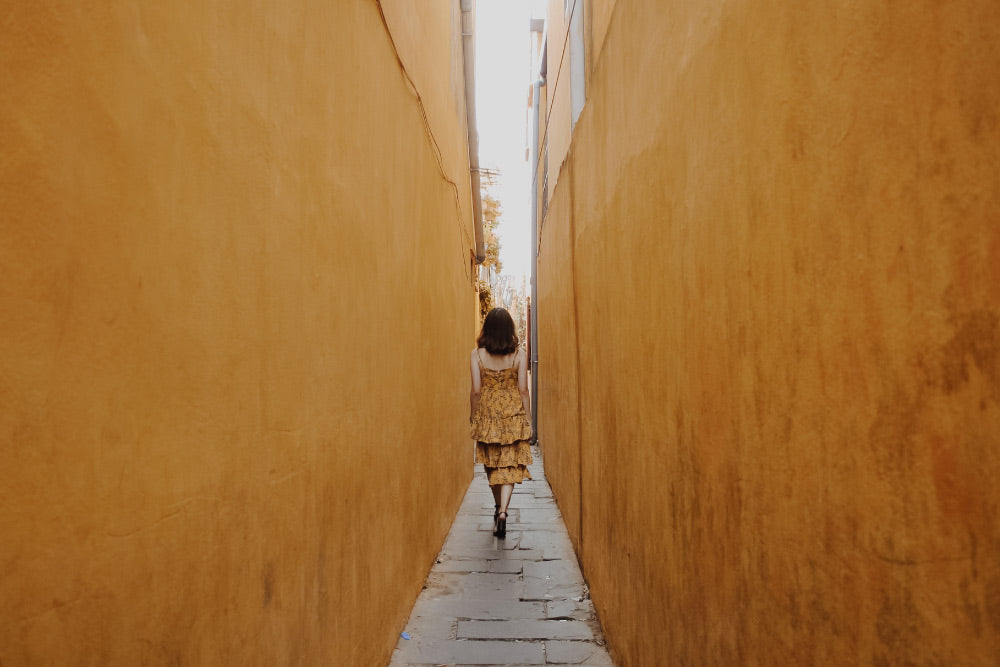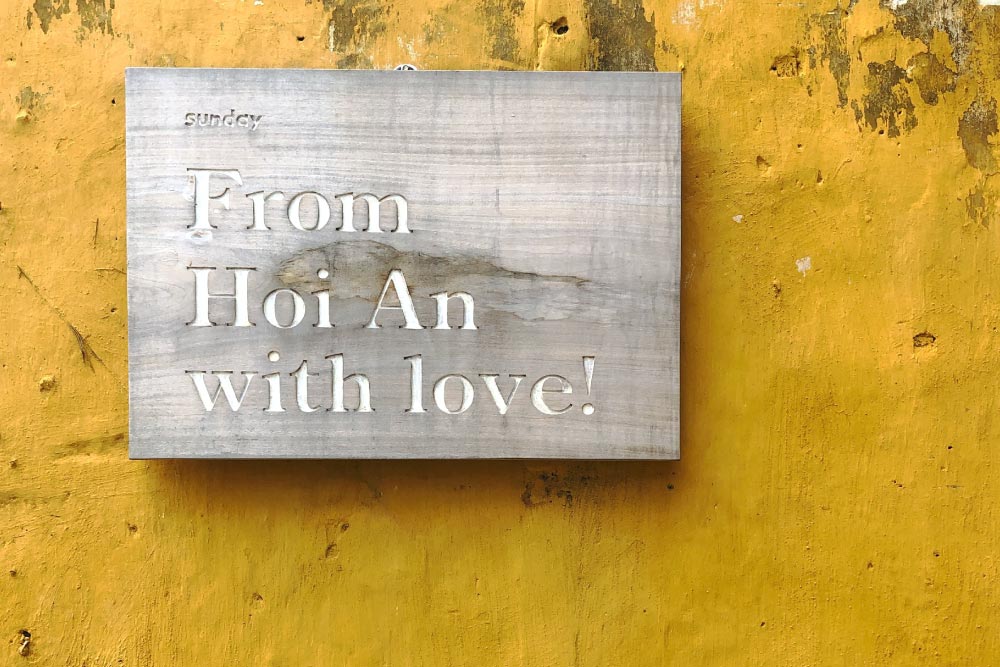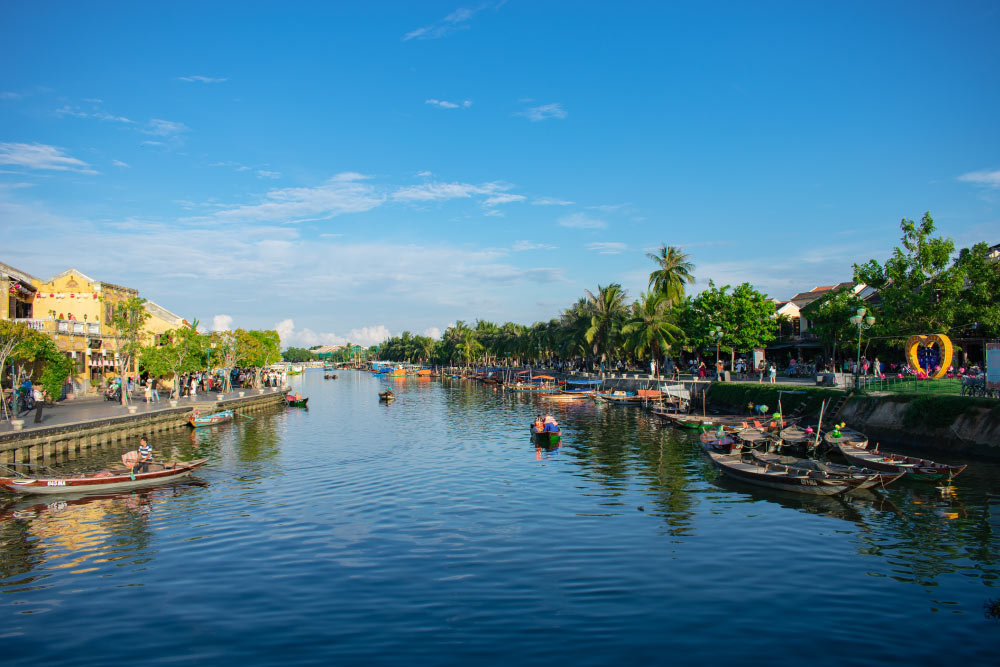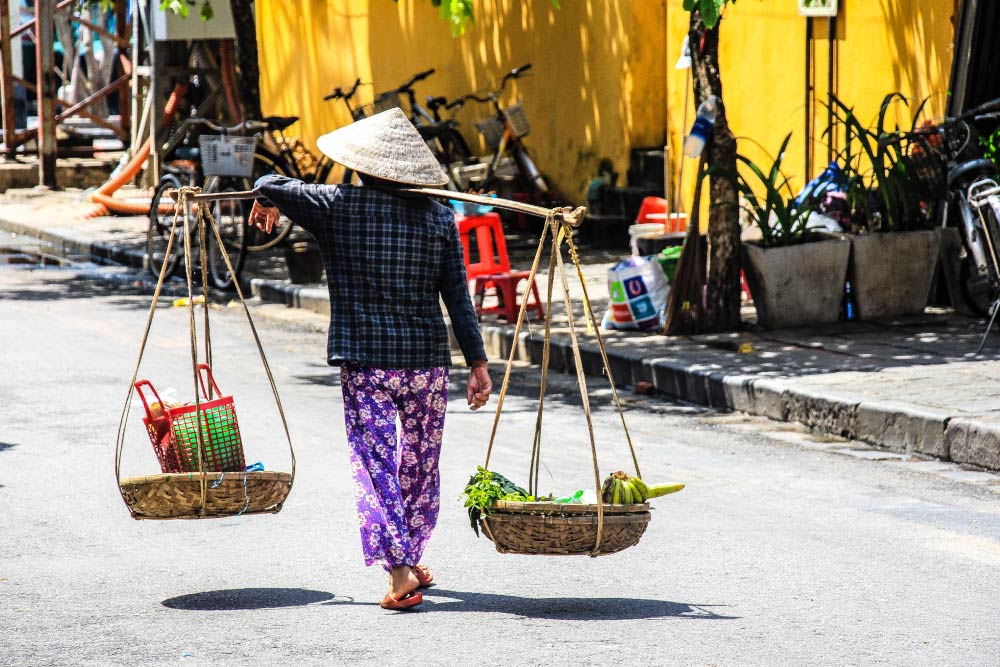If you haven't visited Hoi An (Hội An), considered the most beautiful city in Vietnam, this is your time to do it! Hoi An is a coastal city well known for its beauty, its history, and for the well-preserved nature of its old town and its many canals. You may already know this, but Vietnam has recently become one of the most touristic countries in the last 10 years and, along with this, the city Hoi An It has become one of the most visited towns in the area.
Located halfway between Ho Chi Minh and the capital Hanoi, we find Hoi An, one of the most visited and beautiful cities in the country. Walking through its streets is breathing tradition and culture, truly one of the treasures of Vietnam. You cannot miss a spectacular tour of its old town, full of places of interest and hundreds of spiritual temples around the city that will undoubtedly transport you to ancient times, full of history and ancestral culture. Its atmosphere of an ancient port city is in the air!
This is one of the most recommended trips for lovers of history, Asian culture and also a must-see if you are visiting Vietnam. It really is one of those spots that you don't regret visiting for even a second. If you are thinking about Visit Hoi An We remind you that it is not an extremely large city, so spending a few hours there might be enough to fully explore it and enjoy it. But you will definitely want to plan more time and extend your itinerary!
Full of old buildings, historic houses, warehouses and shops selling fabrics, porcelain or souvenirs, Hoi An They are still very well preserved in the streets near the river, which are incredible to admire when you go for a walk. But the best part is when night falls, when hundreds of colorful lanterns in rounded and cylindrical shapes like large pumpkins light up along the streets while hanging on each side of the buildings. It really is quite a spectacle!
Are you ready to learn a little more about the most beautiful city in Vietnam? Keep reading and find out what the experience of visiting the town of Hoi An!

How to get to Hoi An?
It is possible to reach Hoi An There are many ways to get there: you can do it by private vehicle, by bus, by train or by plane. Because the city has become one of the country's top tourist destinations, there are many agencies that offer transfers, you just have to choose the one that best suits your needs and budget.
You must take into account in Hoi An It does not have a train station or airport. That is why you will have to travel to Da Nang, a sister city located about 45 minutes away. In any case, you can opt for the possibility of hiring a minibus service that offers transfers to Hoi An for some 110,000 VND (around €4).
If you want the cheapest option, you can get to the city by bus, which can reach any point in Vietnam. For example, from Hue city it will take about 3-4 hours while from Nha Trang it takes 8-9 hours, although it has more comfortable reclining seats for the trip. Both can be taken in the afternoon shift (13:30h) or in the evening (20:00h). These two options range from 180,000 to 190,000 VND. In addition, you can opt for the Open Bus Tour, which connects Hanoi with Ho Chi Minh City, with stops in different cities, including Hoi An.

What to see in Hoi An?
As we mentioned before, its architecture, a mix of eras and varied styles is what defines and differentiates Hoi An of the rest of VietnamThis coastal city is filled with wooden Chinese and Japanese temples, colorful French buildings, and ornate Vietnamese houses. But the city's most notable features include its peaceful streets, iconic Japanese pagoda bridge, and proximity to a long beach. More on that later!
How to visit its temples and areas of interest?
If you want to visit the temples you should go to the Tourist Information Center Hoi An, where you will have the option to buy the cultural ticket corresponding to access to the temples of the city, since it was declared a World Heritage Site by UNESCO in 1999. Visiting 5 temples will cost you about 120,000 Dons, which is equivalent to about €4.50, which is very good and very affordable. If you do not buy the ticket there you would have to buy the individual entrance to each place, and it would be more expensive.
In the information centre you will find a list of hundreds of temples to see and learn about. This entry, as we said, is useful for you to choose the 5 that you would like to visit the most among museums, cultural centres, temples and traditional houses, which are very peaceful and colourful. They are full of traditional lanterns, but also beautiful water ponds, internal bridges, ceramic dragon sculptures, and also other iconic animals that light up at night.

How to get around Hoi An Old Town?
The old town of Hoi An, also known as The Ancient Town, is really magnificent to visit and you can explore it on foot or by bicycle. In fact, one of the most essential features of this place is that cars are not allowed, so traffic will not affect your walk at all. Only bicycles are allowed, and after three in the afternoon local time it is completely pedestrianized. The best thing you can do is walk through its historic center, and enjoy its shops with iconic objects and its buildings that really reflect the passing of history. It is an excellent way to travel through time! To think that this city has been preserved in such good condition because, during the Vietnam War, most of the battles in the neighboring city of Hue, and Hoi An was permeated by many of the attacks, allowing it to remain in better condition.
Something essential in cities like Hoi An is to visit the local markets, this is where you really come into contact with the locals and you can get a close look at the culture of the city. Right next to the main market in the city is where the city centre begins. Hoi An, which if you look closely you will notice that it is made up of three main streets painted yellow and decorated with lanterns, where you feel and perceive the passing of time as they guide you directly to the old town.
It is highly recommended to take a night walk through the streets of Ancient Town. From dusk until 10:30 p.m. the streets are filled with lights and lanterns classics, which invites you to take a pleasant and quiet stroll through the city centre. Please note that restaurants and shops remain open until approximately this time.
We remind you that it is very common for it to rain in Hoi An, although the truth is that one of the charms that most defines this city. So, pack your raincoat and umbrella, and don't let the monsoons stop you from adventuring! This is in fact one of the most ideal times to take refuge among its cafes and restaurants to relax a bit and then go out to enjoy the night in Hoi An, a colorful and illuminated spectacle with lights and lanterns that dazzle all over the city. Although, if you want to avoid this situation, you can consider visiting the city in summer instead of winter.

VISIT THE JAPANESE BRIDGE / CAU CHUA PAGODA
This is the most famous bridge in Hoi An, and one of the most emblematic spots in the city. The Japanese covered bridge It reflects the unique blend of local and foreign influences, and is curiously guarded at each end by iconic statuettes: a dog and a monkey. According to the story, this is because many of the Japanese emperors of the time were born in “monkey” and “dog” years. However, other theories suggest that this is because construction began in a “monkey” year and was completed in a “dog” year.
The Japanese bridge in Hoi An It is made of wood and was built by the Japanese in the early 17th century. This is undoubtedly one of the most visited spots in the town. We find it located at the western end of Tran Phu Street, one of the streets parallel to the city canal.
It is important to note that we must include the Japanese Bridge Pagoda as part of the monuments on our ticket when we are at the tourist information center, since it is required to pay for it when you cross. It is the only bridge in the world that has a temple and its entrance has an entrance fee. Inside the bridge we will see that the structure is made entirely of wood, full of old photographs and colorful lanterns that decorate it.
Once you cross the bridge to the other side, you'll see that everything is really amazing, bright and very local. In fact, you'll notice that the shops and stalls are a bit cheaper on this side of the bridge, so if you're interested in buying things at the market, this is your best bet. Stall after stall, one next to the other, you'll find little treasures, pieces of art, colorful kites, souvenirs and a host of cool lanterns that you'll definitely want to take home as a souvenir.

GET TO KNOW TAN KY'S OLD HOUSE
“Tan Key” means “Store of Progress”. This is perhaps the traditional house in the whole city, and it is one of the most famous and visited by tourists in Hoi An. We found it located on Nguyen Thai Hoc Street (101) just three minutes from the Japanese Bridge. Behind the river area we found it on Bach Dang Street.
It was originally built by three different architects; one Chinese, one Vietnamese and one Japanese, so it is impressive to recognize all the different nationalities reflected in the same construction. Although the truth is that this diversity is very typical of Hoi An, and that is why it is considered one of the most representative characteristics of the city.
ENJOY WATER PUPPET SHOWS
The water puppets or water puppet shows are one of the biggest attractions in Vietnam.Even if you don't know Vietnamese, you'll surely get the story perfectly from the context! They are incredibly entertaining and also iconic in the country. Their tradition, which dates back to the 11th century, is originally from the north of the country, when villagers used this as a form of entertainment when the rice fields were flooded after the monsoons, representing in an entertaining and different way the stories of daily and rural life in different localities, such as fishing and harvesting.
It is also a form of expression of Vietnamese folklore and popular stories of the time. At that time, puppeteers would hide behind bamboo in waist-deep water, and use long poles to “bring the puppets out of the water.” Today, there are theaters in several cities created especially for these events, always accompanied by a traditional Vietnamese orchestra to complement the scenes. However, some traditional ponds are still being used improvised in villages near the villages. Hoi An, as well as in the city itself, although many also install portable ponds to make shows in the town more accessible to tourists.
If you like this kind of traditions, in the upper part of the city of Hoi An There is a theatre (one of the most famous in the country) no more than 1km from the historic centre, following the main road. It is open on Tuesdays, Fridays and Saturdays, when they present a one-off performance open to the public at 6:30pm. You can't miss it!

THE MAIN PLACES OF INTEREST IN HOI AN
The Tran Family Chapel
We found it located at number 21st of Le Loi. It was built in 1802 by Tran Tu Nhac, a highly respected mandarin during the Gia Long reign. In this chapel you can see photographs of the ancestors of the Tran family, which became an iconic and symbolic reference of the “Vietnamese family” of the time. Today, it functions as a place of worship for the family’s ancestors. It also has a unique Vietnamese souvenir shop, very emblematic in the city.
The “Cantonese Assembly Hall” / Quan Trieu
The Cantonese Assembly Hall This is a colorful temple built in 1885 by Cantonese-Chinese merchants. Just the entrance to this spot is truly impressive and unforgettable, because you are greeted by a large dragon figure, which usually has a great impact on visitors. It also has a large collection of small dragons in the Cantonese style that are distributed throughout the place. According to legend, its parts were individually manufactured in China and then transported and assembled in Hoi AnThe Cantonese assembly hall is located about 50m to the left of the Japanese bridge.
Phuc Kien Assembly Hall
This house museum, also used as an assembly house, is distinguished from the rest by its attractive and colorful facade, surrounded by a beautiful garden. It is one of the most visited house museums of all in Hoi An for the history it houses and for how well maintained it is on the outside and also on the inside, which stands out for housing the model of a ship from 1875, a grand altar and beautiful paintings of the time. Its construction dates back to the 17th century and was built by Chinese merchants who dedicated the place to the goddess of the sea and to sailors.

THE THU BON RIVER
The Thu Bo Rivern, which crosses the middle of the city and is one of the biggest attractions of the Hoi An. In addition to bringing beauty and freshness to the city, many of the inhabitants of this town They base their lives on eFor example, fishermen who go fishing every day, or simply because it is an excellent way to travel from village to village.
One of the main activities you can do on your visit to Hoi An is to take a boat ride to learn more about the life and idiosyncrasy of the fishermen on the outskirts of the city. A little more than half an hour before sunset is an ideal time to start this tour. It will be quite a spectacle and you will also have a different point of view of the city! Especially after dark, when the festival of lights, colors and lanterns begins.
GO TO THE BEACH IN HOI AN
Hoi An offers up to 20 kilometers of beach to relax in a different environment. It is ideal to cool off in the hottest times of the year, especially if you visit the city in summer. On the shores of the beach you can see some very typical and charming round Vietnamese boats called "thungs". In general, the beaches of Hoi An They are calm and the water temperature is usually relatively high. There are two mainly, adjacent to Hoi An: “An Bang Beach” and “Cua Dai”.
- An Bang Beach: A long beach with all kinds of services and beach bars just 5 kilometres away. Hoi An, taking Hai Ba Trung road. The recommendation is to go to the last parking lot, which is the closest to the beach.
- Cua Dai: You will find it right next to An Bang Beach, about 6 kilometers away. Hoi An, and also has all kinds of services. You can get to either of them by motorbike, taxi or renting bicycles, as there are parking lots for this.

The experience of visiting Hoi An It is undoubtedly one of the most exciting when you visit VietnamYou will see that it is ideally preserved and it is also incredibly picturesque and charming from wherever you look. And its history and culture can be felt from all fronts! It is truly a must-see for all adventurers who love relaxed walks and ancient culture. And you, are you ready to include Hoi An on your next vacation?

















































